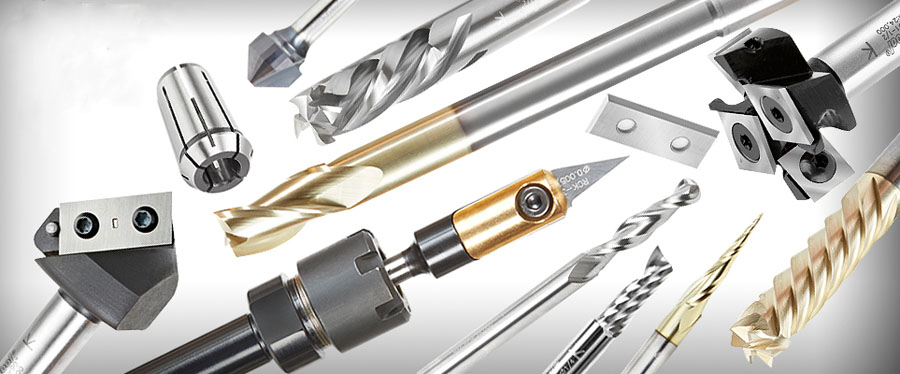In the process of machining, some situations that are difficult to process with standard tools are often encountered, so the production of non-standard tools is very important for machining.
The use of non-standard tools in metal cutting is more common in milling, so this article mainly introduces the production of non-standard tools in milling.
Since the production of standard tools is aimed at the cutting of common metal or non-metal parts with a wide range and a large amount, when the workpiece is overheated and the hardness increases, or the workpiece is stainless steel, it is very easy to stick to the knife, and there are also some surface of the workpiece. When the geometry is very complex, or the surface to be machined has high roughness requirements, standard tools cannot meet the needs of machining. Therefore, in the process of processing, it is necessary to carry out targeted design on the material of the tool, the geometry of the blade, the geometric angle, etc., which can be divided into two categories: special order and non-special order.
1. Non-customized tools mainly solve two problems, size and surface roughness.
1. Size Issues
You can choose a standard tool with a size similar to the required size, and it can be solved by regrinding, but two points should also be noted:
1) The size difference should not be too large, generally not more than 2mm, because if the size difference is too large, the groove shape of the tool will change, which will directly affect the chip space and geometric angle.
2) If it is an end mill with a blade hole, it can be re-ground on a common machine tool, and the cost is low. If it is a keyway milling cutter without a blade hole, it cannot be carried out on an ordinary machine tool, and it needs to be carried out on a special five-axis linkage. The cost of changing the grinding on the machine tool will also be higher.
2. Surface roughness problem
It can be achieved by changing the geometric angle of the blade. For example, increasing the front and back angles will significantly improve the surface roughness of the workpiece. However, if the rigidity of the user’s machine tool is not enough, the edge may be dull and the surface roughness can be improved. This aspect is very complicated, and it is necessary to analyze the processing site before drawing a conclusion.

2. The tools that need to be customized are mainly to solve three problems, special shape, special strength and hardness, special chip tolerance and chip removal requirements.
1. The workpiece has special shape requirements.
For example, the tool required for processing is lengthened, the end tooth is reversed, or there are special taper angle requirements, shank structure requirements, edge length dimension control, etc. If the shape requirements of this type of tool are not very complicated, it is actually easy to solve. The only thing that needs to be paid attention to is that the processing of non-standard tools is more difficult. pursuit of high precision. Because high precision itself means high cost and high risk, it will cause unnecessary waste to the production capacity of the manufacturer and its own cost.
2. The workpiece has special strength and hardness requirement
If the workpiece is overheated, the strength and hardness are high, the general tool material cannot be machined, or the tool sticks badly. This is, it is necessary to put forward special requirements for the material of the tool. The general solution is to choose high-grade tool materials, such as cobalt-containing high-speed steel tools with high hardness to cut quenched and tempered workpiece materials, high-quality carbide tools can process high-hard materials, and even can Milling instead of grinding. Of course, there are also some special cases. For example, when processing aluminum parts, it may not be suitable to have a kind of superhard tool on the market. Although aluminum parts are generally soft, it can be said that it is an easy-to-process product. The material used for hard tools is actually a kind of aluminum high-speed steel. This material is indeed harder than ordinary high-speed steel, but when processing aluminum parts, it will cause the affinity between aluminum elements, which will increase the wear of the tool. At this time, if you want to get high efficiency, you can choose cobalt high-speed steel instead.
3. The workpiece has special requirements for chip tolerance and chip removal.
At this time, a smaller number of teeth and a deeper chip flute should be used, but this design can only be used for materials that are easier to machine, such as aluminum alloys.
In the design and processing of non-standard tools, there are many problems that need to be paid attention to: the geometry of the tool is relatively complex, and during heat treatment, the tool is prone to bending, deformation, or local stress concentration, which should be avoided during design. For parts that are prone to stress concentration, for parts with large diameter changes, add bevel transition or step design.
If it is a slender piece with a relatively large length and diameter, during the heat treatment process, it needs to be checked and straightened after each quenching and tempering to control its deformation and runout. The material of the tool is relatively brittle, especially the material of cemented carbide, which makes the tool break when the vibration is large or the machining torque is large during processing. Often it will not cause great damage, because the tool can be replaced if it is broken, but in the processing of non-standard tools, because the possibility of replacement is not large, once the tool is broken, it will cause a series of problems, such as delivery Delay, etc., will cause great losses to the user.


